T-72B3, Captured, Kharkiv Oblast Summer 2022
Let's start talking about the T-72 by talking about the T-90 instead. Having first seen service in 1973, the T-72 has experienced a multitude of evolutions and developments. Ultimately, the improvements have been codified into a totally new tank, the T-90. And that's where the T-90 story ends, because the Russian government determined that constructing a wholly new tank was too expensive compared to bringing extant T-72s up to T-90 standards.
Open Source Intelligence (OSINT) folks have put together this handy guide ( https://www.bellingcat.com/resources/2015/05/28/tankspotting-how-to-identify-the-t-72b3/ ) for identifying the T-72B subvariants. Basically, the T-72B1 is essentially a stock, late model, domestic-production T-72, but with Kontakt-1 ERA bricks blanketing the entire tank. The T-72B Obr. 1989 replaces the Kontakt-1 bricks with triangular Kontakt-5 plates on the turret and flat Kontakt-5 plates on the hull. The TPN-3-49 IR sight is replaced with a 1K13-49 sight. The T-72BA replaces the RMSh tracks with newer T-90-style UMSh tracks and adds a meterological sensor. The T-72B3 deletes the large L-2AG Luna-2 IR spotlight and replaces the 1K13-49 with a Sosna-U thermal sight. The T-72B3 Obr. 2014 (variously referred to as T-72B3M) simply adds a PK-Pan panoramic sight for the commander, while the T-72B3 Obr. 2016 adds slat armor to the turret sides and rear hull, an extra Kontakt-5 block underneath the gunner's sight, and swaps out the Kontakt-5 on the sides of the hull and turret for Relikt ERA blocks. The prominent Shtora-1 dazzlers featured on T-90 tanks were never fitted to T-72s and are more of a liability than asset, offering no protection from ATGMs and actually presenting gaps in the turret's frontal ERA array.
A non-standard fixture of Russian tanks participating in the invasion of Ukraine are large, slatted metal structures fixed to the turrets that were intended to provide protection from shaped-charge top-attack anti-tank munitions. Due to their total inability to provide any protection and their tendency to both make the tank easier to hit and hinder the ability for the crew to escape, they have quickly acquired the perjorative term "Cope Cages." These appear to be constructed out of common stock steel and have little standardization. Since these provide little utility, they've been removed on captured vehicles; I put stubs of plastic to represent steel tube that's been sawed off, which you can hardly see.. but I know they're there. If you want the real thing, Balaton Model sells it in resin but they call it an "Anti-Javelin Grid" and Trumpeter offers it in styrene.
So this kit: Meng offer you a T-72B3 (sans suffixe). It's a typical Meng kit, which means there's very little drama in building it. If you're familiar with the T-72 family, it presents little surprises or bad engineering decisions. The workable links are surprisingly robust.
Oryx maintains a continuously updated list of captured and destroyed Russian equipment primarily gleaned from social media posts, so while this specific tank may not exist, its markings are more of an amalgamation of various slogans, graffiti and paint blobs slapped on to a number of T-72B3s on the Oryx list. The Oryx list isn't one hundred percent definitive, but it's pretty close; they don't, for example, feature intact, un-captured Ukrainian tanks and artillery pieces (2s7 Pion, for example) adorned with silly "name my tank" graffiti like "superbonker 9000" or "nonsense pronouncer".
One thing that is consistent is that the Russian-applied tactical markings (Z, O, V) have no standardization and are immediately obliterated by their new owners, with whatever paint is on hand. Hence in my example, the typical practice of putting a "Z" on every flat surface is covered up to varying degrees of effectiveness. After acquisition, Ukrainian forces put large white crosses on the sides and topside surfaces of their armored vehicles.
Weathering was kept somewhat light considering the dryer conditions of the '22 Ukrainian summer and the fact that the Kharkiv counteroffensive turned into an outright rout that scads of perfectly operable equipment were abandoned without seeing much action at all.
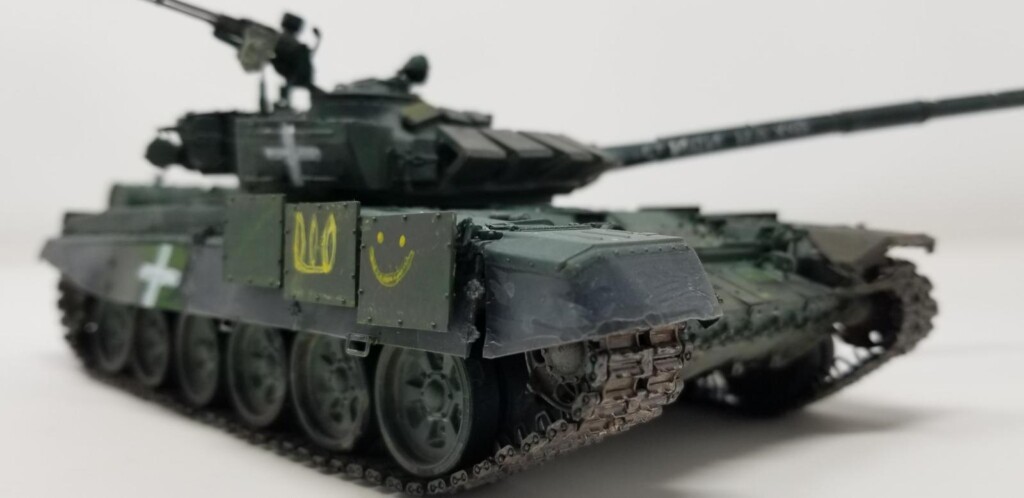
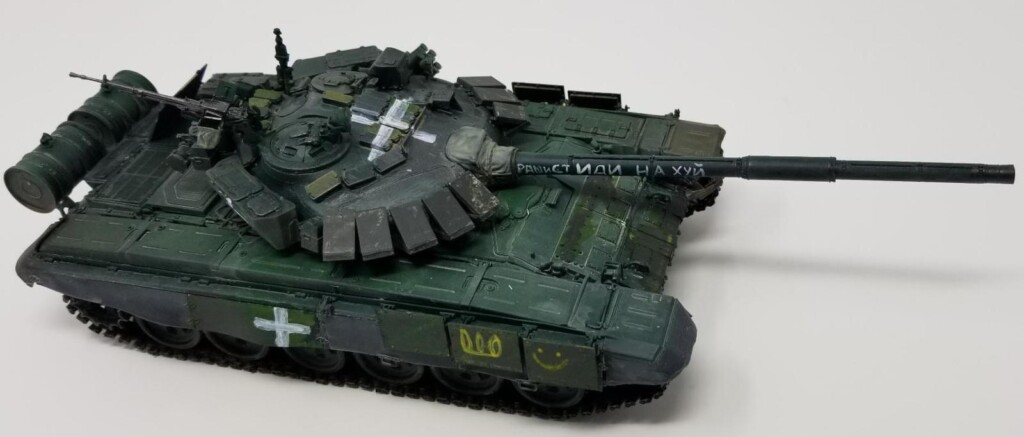
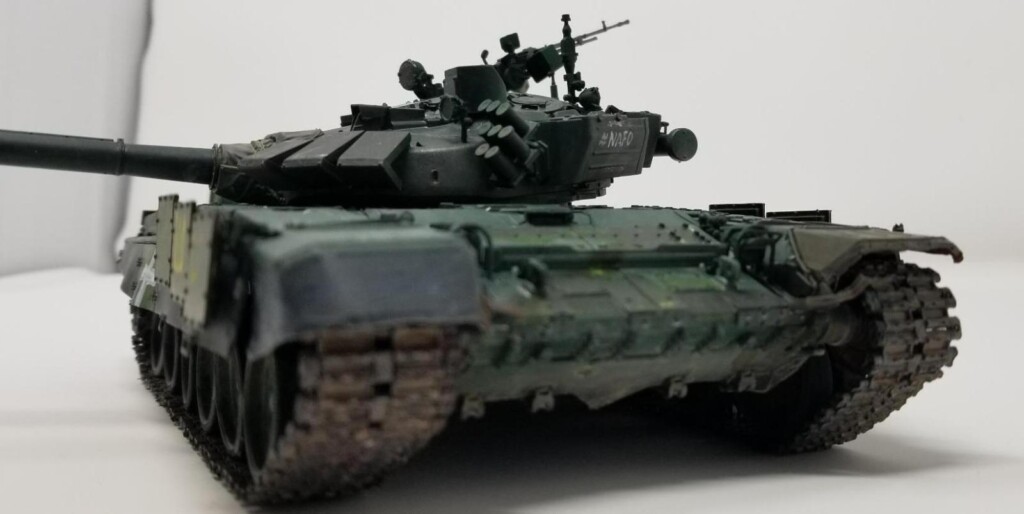
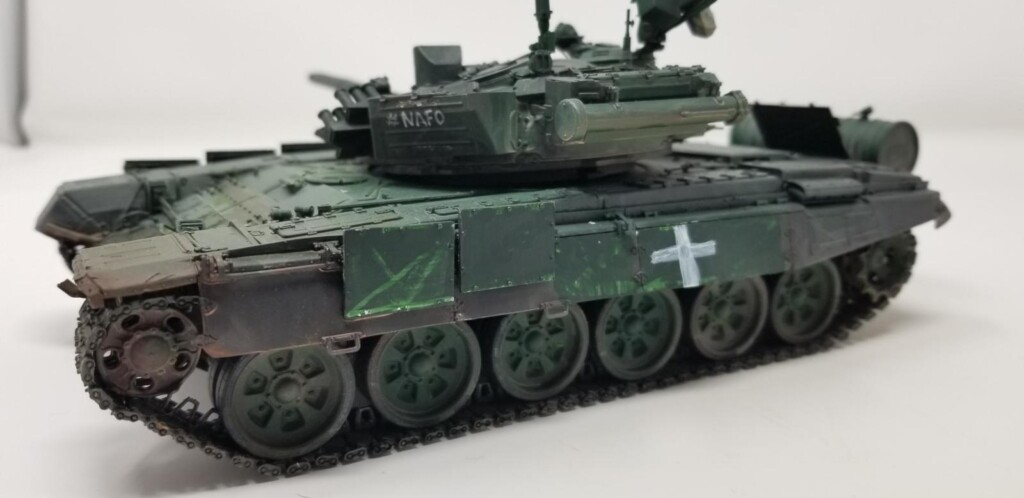
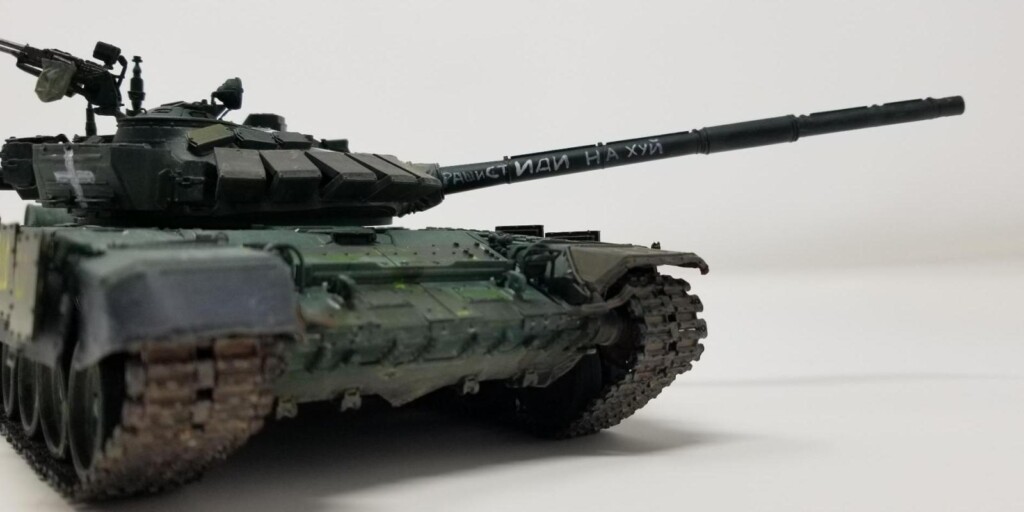
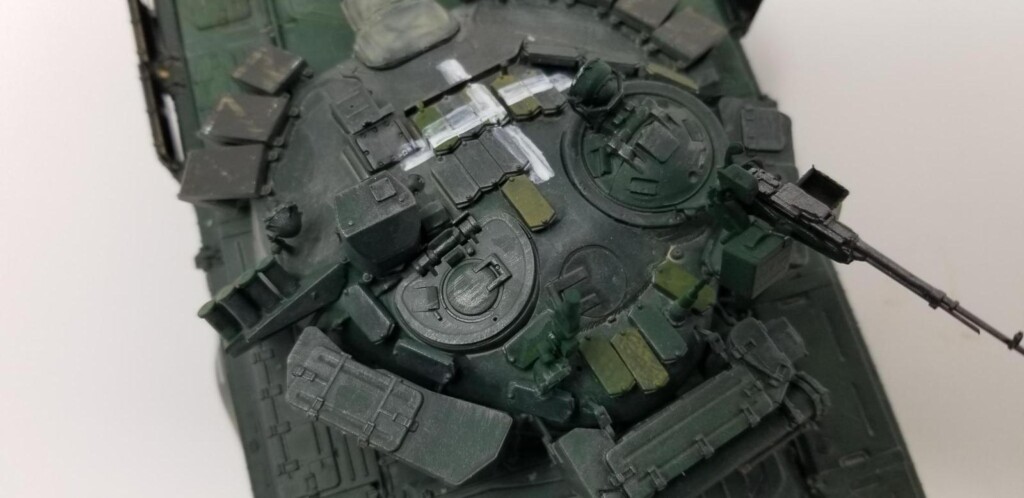
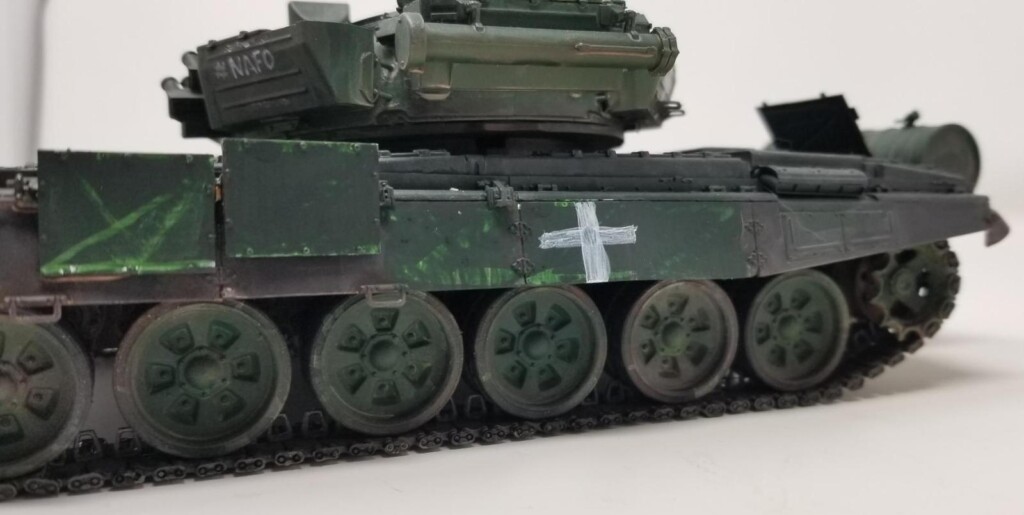
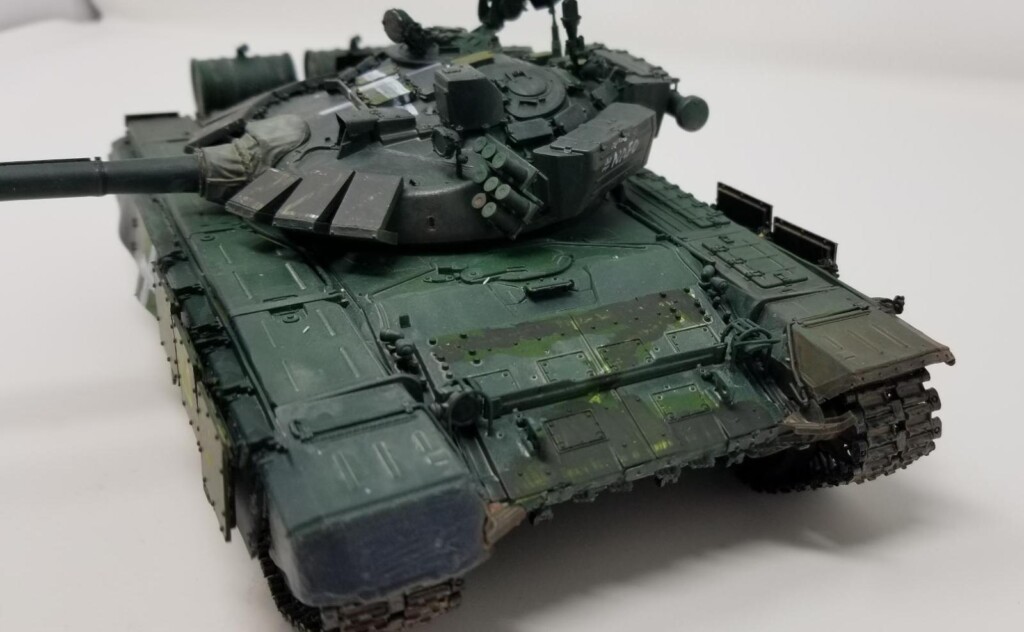
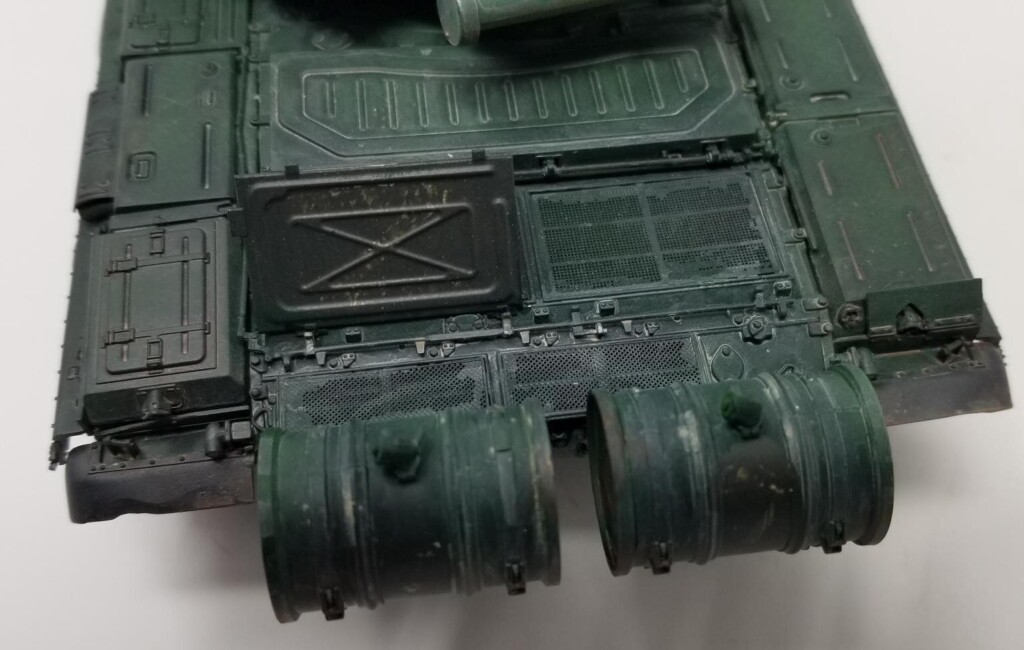
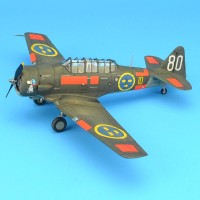
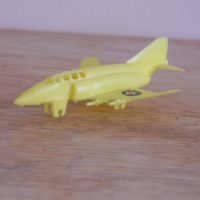
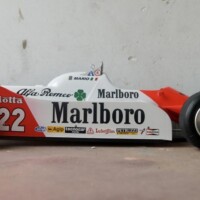
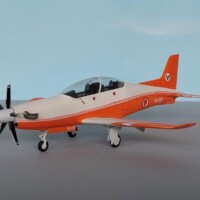
Nicely done, an interesting build.
Excellent model and fantastic article, Wes!
Well done!
Absolutely great result, Wes @avispa93
Nicely weathered and nice to read article.
Yes sir, that is a great tank, done so realistically! And, a very informative article as well!
And, a very informative article as well! 
According to my friend in Ukraine, a lot of the Kontakt boxes found on captured tanks are nothing more than empty plywood boxes that are present to bolster the confidence of Russian crews. I can not confirm this but I’m light of the fact that Russian helmets are very often WWII helmets inside a cheap plastic and foam exterior, empty plywood Kontack boxes would not surprise me.
Great to see a model of a captured Russian tank perfectly finished in its new colour scheme.
Thank you for these reference links.